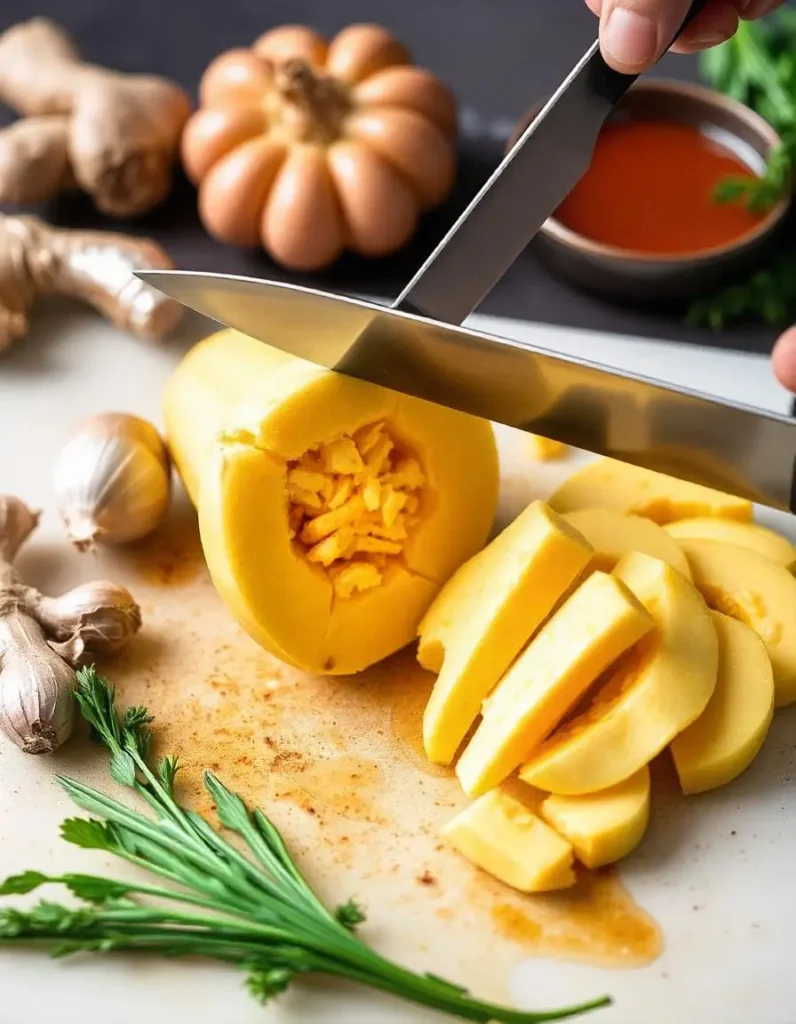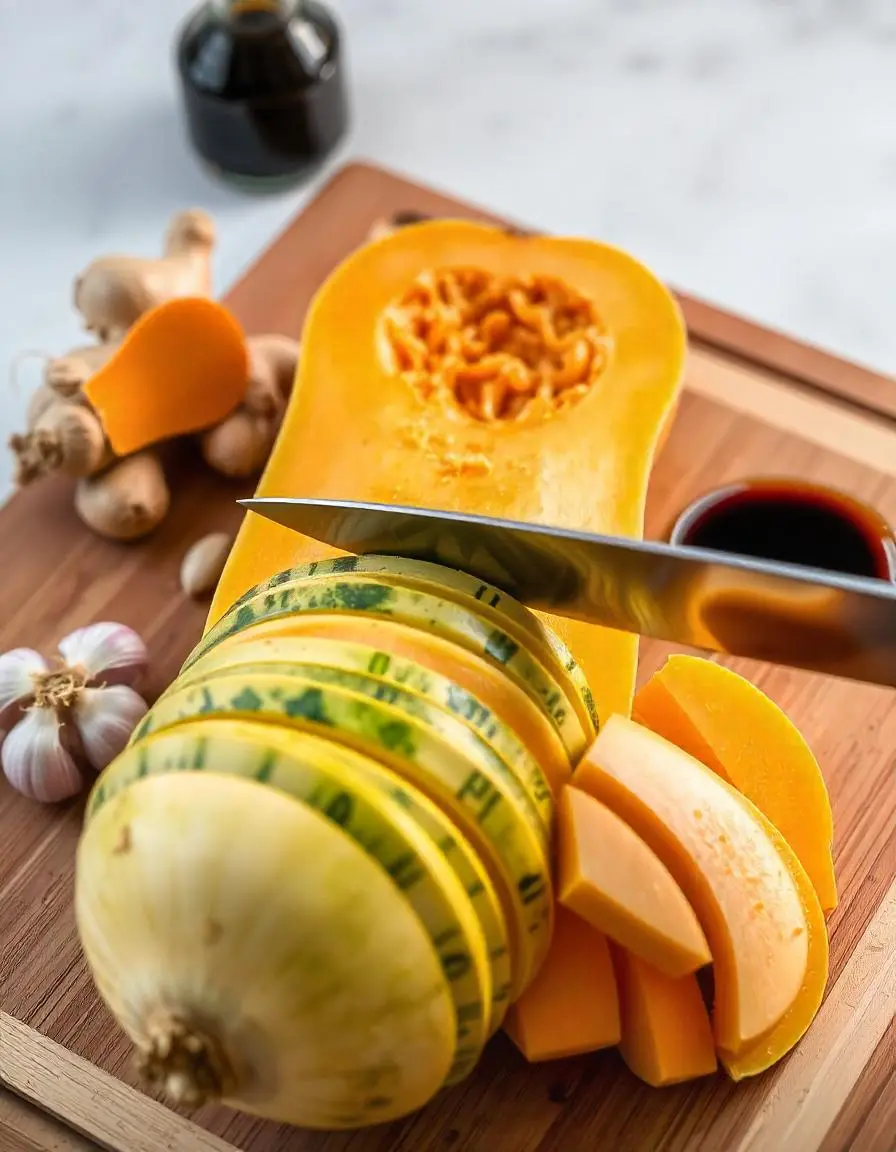Kabocha squash, a beloved vegetable in Asian cuisine, has earned a special place in kitchens around the world due to its rich flavor, versatility, and numerous health benefits. In Chinese, Kabocha squash is commonly referred to as “日式南瓜” (rì shì nán guā), which translates to “Japanese pumpkin” or simply “南瓜” (nán guā), meaning pumpkin.
This article will dive deep into Kabocha squash, exploring its origins, its Chinese names, cultural significance, health benefits, cooking methods, and much more. Whether you’re new to this vegetable or looking for creative ways to use it, this guide is your go-to resource.
Introduction to Kabocha Squash
Kabocha squash, also known as Japanese pumpkin, is a small, round squash with dark green skin and vibrant orange flesh. It is a variety of winter squash that belongs to the gourd family, Cucurbitaceae, and is often mistaken for a pumpkin due to its appearance and flavor. The squash is native to Japan, but it is now widely grown in many parts of the world, including the United States, Canada, and parts of Europe.
What makes Kabocha squash stand out is its flavor. The flesh is sweet and creamy, with a smooth texture that resembles a cross between a pumpkin and a sweet potato. The skin is edible, adding a slight earthiness when cooked, although some people prefer to peel it for smoother textures in certain dishes. This squash is prized for its versatility and ability to absorb flavors, making it perfect for both savory and sweet preparations.

Nutritional Benefits
Kabocha squash is more than just delicious—it’s packed with nutrients. One of the standout qualities of this vegetable is its high beta-carotene content, which gives it its rich orange color. Beta-carotene is a potent antioxidant that plays a crucial role in maintaining good vision, boosting immune function, and reducing inflammation. Additionally, Kabocha squash is an excellent source of dietary fiber, which promotes digestive health and helps regulate blood sugar levels.
A single cup of cooked Kabocha squash contains approximately:
- 49 calories
- 12 grams of carbohydrates
- 4 grams of fiber
- 1 gram of protein
The Chinese Name for Kabocha Squash
In Mandarin Chinese, Kabocha squash is most commonly referred to as “日式南瓜” (rì shì nán guā), which directly translates to “Japanese pumpkin.” The term 日式 (rì shì) means “Japanese style,” while 南瓜 (nán guā) means “pumpkin.” This name reflects the squash’s origins in Japan, where it is a staple in many dishes.
The word 南瓜 (nán guā) is the general term for pumpkin in Chinese, and it is used to refer to various types of squashes and gourds. In fact, many types of winter squash are called 南瓜, from the more common orange pumpkins to varieties like butternut squash and acorn squash. When you refer to Kabocha squash in Chinese, people might also use just 南瓜 if the context makes it clear that you’re talking about the Japanese variety.
Regional Differences in Chinese Dialects
The term “日式南瓜” (rì shì nán guā) is used most frequently in Mandarin-speaking regions, but the name can vary slightly in other Chinese dialects. In Cantonese, for example, Kabocha squash may be referred to as “日式瓜” (yat sik gwa), with 瓜 (gwa) meaning “melon” or “gourd.” Regardless of the dialect, though, Kabocha squash is easily recognized by its distinctive shape and flavor.
Cultural Significance of Kabocha Squash in Chinese Cuisine
While Kabocha squash is closely associated with Japanese cuisine, it has found its place in Chinese kitchens as well. It is often used in home-style cooking, particularly in soups, stews, and stir-fries, especially during the cooler months when people crave hearty, comforting dishes.
Comforting Soups and Stews
In Chinese cuisine, Kabocha squash is a popular ingredient in soups and stews. The vegetable’s naturally sweet flavor pairs well with rich broths made from pork, chicken, or beef. A classic example is a Kabocha squash and pork bone soup, where the squash absorbs the savory flavors of the meat and enhances the broth’s depth. The natural sweetness of the squash also balances out the richness of the pork, making the dish both nutritious and satisfying.
Stir-Fried Dishes
Kabocha squash’s firm texture makes it an excellent choice for stir-frying. It holds up well under high heat, maintaining its shape while absorbing the flavors of garlic, ginger, soy sauce, and other seasonings. A typical stir-fry might include Kabocha squash, bell peppers, mushrooms, and green onions, creating a colorful and nutritious dish that pairs perfectly with steamed rice or noodles.
Chinese Dumplings and Pies
Another popular use for Kabocha squash in Chinese cooking is as a filling for dumplings and pastries. Its smooth texture and subtle sweetness make it an ideal base for savory fillings, often combined with ingredients like pork, shrimp, or mushrooms. The squash can also be used in sweet pies or buns, making it a versatile ingredient for both savory and sweet dishes.
Health Benefits of Kabocha Squash
Kabocha squash is not just a flavorful addition to your meals; it also offers numerous health benefits that make it an excellent choice for a balanced diet.

Rich in Antioxidants
The vibrant orange color of Kabocha squash comes from its high beta-carotene content. Beta-carotene is a type of antioxidant that helps neutralize harmful free radicals in the body, reducing the risk of chronic diseases such as cancer and heart disease. It also supports skin health, promotes a healthy immune system, and improves night vision.
High in Fiber
Kabocha squash is an excellent source of dietary fiber, which is essential for maintaining good digestive health. Fiber helps regulate bowel movements, prevent constipation, and support gut health. Additionally, fiber slows down the absorption of sugar, making Kabocha squash a good option for people managing blood sugar levels, such as those with diabetes.
Low-Calorie, Nutrient-Dense
If you’re looking to maintain a healthy weight or reduce your calorie intake, Kabocha squash is a great option. It is low in calories but high in essential vitamins and minerals, including Vitamin A, Vitamin C, potassium, and magnesium. Its fiber content also promotes feelings of fullness, which can help curb overeating.
Supports Immune Health
Kabocha squash is packed with Vitamin C, a crucial nutrient for immune function. Consuming Vitamin C-rich foods like Kabocha squash can help strengthen your immune system, making your body more resilient against infections and illnesses.
How to Cook Kabocha Squash in Chinese Dishes
Kabocha squash is incredibly versatile, and there are many ways to prepare it in Chinese cuisine. Here are some popular methods:
Kabocha Squash Soup (南瓜汤)
A favorite winter dish, Kabocha squash soup is both nourishing and comforting. The sweetness of the squash blends beautifully with savory ingredients like ginger, garlic, and chicken stock. For a creamier version, blend the soup until smooth, and add a dollop of coconut milk for extra richness. Garnish with cilantro and a squeeze of lime for a refreshing twist.
Kabocha Squash Stir-Fry (南瓜炒)
Stir-frying is a quick and easy way to cook Kabocha squash while retaining its flavor and nutrients. Slice the squash into thin wedges or cubes and stir-fry with garlic, ginger, soy sauce, and sesame oil. Add other vegetables such as bell peppers, onions, and carrots for a colorful and satisfying dish.
Steamed Kabocha Squash (蒸南瓜)
Steaming Kabocha squash is a simple method that helps retain its natural sweetness and nutrients. Steam the squash until tender, then drizzle with soy sauce or serve it as a side dish with your main meal. For a savory variation, try steaming Kabocha squash with minced garlic and scallions.
Kabocha Squash and Pork Belly Stew (南瓜五花肉炖)
This hearty stew combines the richness of pork belly with the sweet, earthy flavors of Kabocha squash. The squash absorbs the savory broth, creating a comforting and flavorful dish perfect for a family meal. Add Chinese herbs such as star anise and Chinese cinnamon for a fragrant, aromatic experience.
Kabocha Squash vs. Other Types of Squash
When comparing Kabocha squash to other types of squash, such as butternut and acorn squash, there are a few key differences.
- Kabocha Squash: Has a dense, smooth texture and a sweet flavor. The skin is edible and adds a slight earthiness when cooked.
- Butternut Squash: Slightly sweeter and more fibrous than Kabocha, with a smooth texture that works well in purees and soups.
- Acorn Squash: Smaller and more delicate, with a mild, nutty flavor. The skin is thicker than Kabocha and often discarded.
Each type of squash has its own unique characteristics, but Kabocha’s sweetness and creamy texture make it especially well-suited for both savory and sweet dishes.
Popular Recipes Featuring Kabocha Squash in Chinese Cooking
Here are a few recipes that showcase Kabocha squash’s versatility in Chinese cooking:
Kabocha Squash with Sweet Soy Sauce (蜜汁南瓜)
This simple yet delicious dish features Kabocha squash cooked in a sweet soy sauce mixture. The squash absorbs the syrupy sweetness, creating a perfect balance of flavors. It’s often served as a side dish with rice or noodles.
Kabocha Squash and Tofu Stir-Fry
For a vegetarian-friendly dish, combine Kabocha squash with tofu in a savory stir-fry. The squash and tofu absorb the flavors of garlic, ginger, and soy sauce, creating a comforting and nutritious meal.
FAQ: Frequently Asked Questions
1.What does Kabocha squash taste like?
Kabocha squash has a sweet, nutty flavor that is often compared to a mix of pumpkin and sweet potato. Its flesh is creamy and smooth, making it ideal for both savory and sweet dishes.
2. Is Kabocha squash the same as pumpkin?
Kabocha squash and pumpkin are often confused because they share similar shapes and textures. However, Kabocha squash is sweeter and denser than most pumpkins. It has a darker green skin, while pumpkins typically have orange skins.
3. Can I eat the skin of Kabocha squash?
Yes! The skin of Kabocha squash is edible and adds a slight earthiness to dishes. It is thicker than the skin of some other squashes but softens during cooking. However, if you prefer a smoother texture, you can peel it off before cooking.
4. How do I choose a good Kabocha squash?
Look for a Kabocha squash with firm, dark green skin that is free of soft spots or blemishes. The squash should feel heavy for its size, which indicates it is full of moisture and flavor. Smaller Kabocha squashes tend to have sweeter flesh.
5. Can I store Kabocha squash?
Uncut Kabocha squash can be stored in a cool, dry place for several weeks, similar to other types of winter squash. Once cut, it should be wrapped in plastic wrap or stored in an airtight container in the refrigerator for up to a week.
6. What can I substitute for Kabocha squash in recipes?
If you can’t find Kabocha squash, butternut squash or acorn squash can be good substitutes, though the flavor and texture may differ slightly. Both have a similar sweetness, though Kabocha is denser.
Conclusion
Kabocha squash, known as 日式南瓜 (rì shì nán guā) in Chinese, is a nutrient-rich vegetable that brings a touch of sweetness and richness to any dish. Whether you use it in soups, stir-fries, or desserts, its creamy texture and naturally sweet flavor make it a versatile and beloved ingredient in Chinese cooking. With its numerous health benefits, including high fiber content, antioxidants, and vitamins, Kabocha squash is not only a delicious addition to your meals but a powerhouse of nutrition.
Experiment with Kabocha squash in your cooking today and discover why it’s such a staple in both Japanese and Chinese cuisine!

